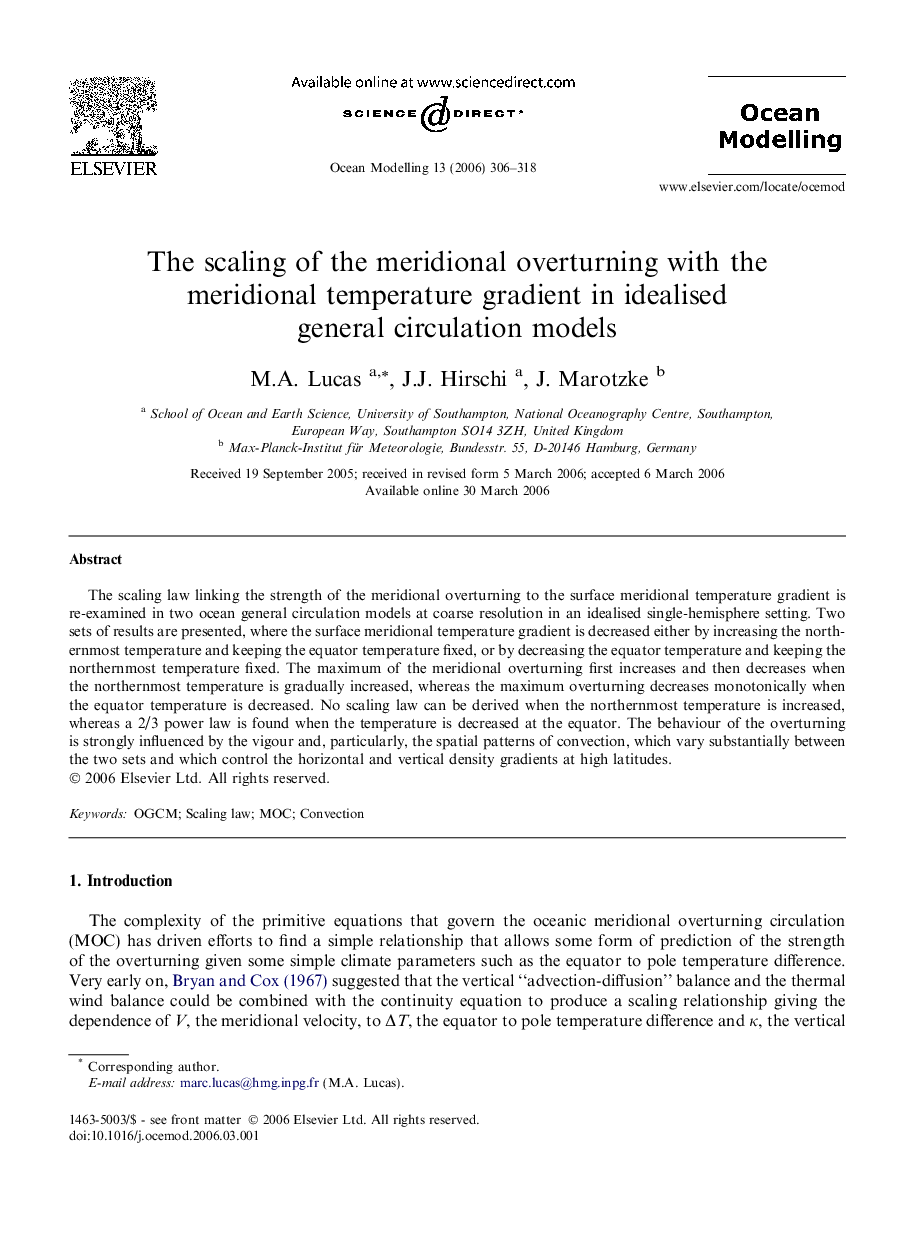| Article ID | Journal | Published Year | Pages | File Type |
|---|---|---|---|---|
| 4552830 | Ocean Modelling | 2006 | 13 Pages |
The scaling law linking the strength of the meridional overturning to the surface meridional temperature gradient is re-examined in two ocean general circulation models at coarse resolution in an idealised single-hemisphere setting. Two sets of results are presented, where the surface meridional temperature gradient is decreased either by increasing the northernmost temperature and keeping the equator temperature fixed, or by decreasing the equator temperature and keeping the northernmost temperature fixed. The maximum of the meridional overturning first increases and then decreases when the northernmost temperature is gradually increased, whereas the maximum overturning decreases monotonically when the equator temperature is decreased. No scaling law can be derived when the northernmost temperature is increased, whereas a 2/3 power law is found when the temperature is decreased at the equator. The behaviour of the overturning is strongly influenced by the vigour and, particularly, the spatial patterns of convection, which vary substantially between the two sets and which control the horizontal and vertical density gradients at high latitudes.
